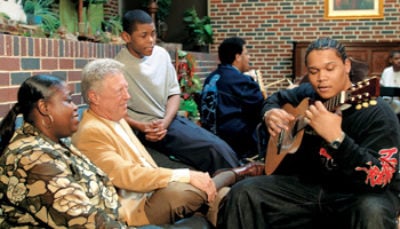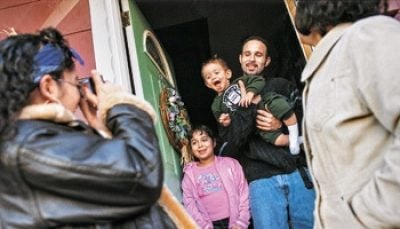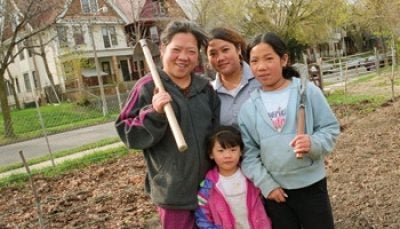High-quality early child care and education are key to healthy development but out of reach for too many kids.
The Annie E. Casey Foundation is improving the neighborhoods where young people and their families live by promoting access to high-quality schools, affordable homes and good jobs. Read about our work here.
Building supportive communities that offer children and adults a range of educational and economic opportunities
High-quality early child care and education are key to healthy development but out of reach for too many kids.
Low-income parents and other adult residents need convenient, ready access to training, education, financial counseling and other services that can help them get jobs to support their families and achieve financial stability.
For many families, housing costs take a significant chunk out of an already meager paycheck, and being forced to move again and again is a reality. Their communities need more housing options that remain affordable for the long term.
Developing local, state and national partnerships to promote policy reform and community change on a broader scale
Changes and innovative approaches to policies and practices in areas such as housing, economic and community development and financing can help revitalize disinvested communities.
Well-established local leadership and a broad range of public and private partners help sustain neighborhood improvements over time.
Universities, hospitals and other anchor institutions rooted in urban areas can help fuel the local economy by supplying jobs for residents and supporting development in surrounding disinvested neighborhoods.
Documenting best practices in community development
The success of children and their parents is intertwined. Programs promoting kids’ health and educational needs must go hand in hand with services for their parents and caregivers, such as job training and financial coaching.
Transforming a neighborhood may involve rehabbing or building new housing on a scale that disrupts a community to ultimately establish safety and stability. Such projects should put people first, lessen the impact of relocation on residents and create a mixed-income community with affordable homes.
Resident involvement and leadership can mean the difference between short-lived and lasting change in a community. They should be actively involved in shaping their neighborhood’s future.

Working to ensure children and families living in several Southside Atlanta neighborhoods — known collectively as Neighborhood Planning Unit V (NPU-V) — have access to the opportunities needed to thrive: good schools, safe and affordable housing, income and careers.

Building and investing in public, private and community partnerships to improve education, job opportunities, health and neighborhoods for Baltimore City’s youth and families.

Public systems, schools and communities guiding public investment toward evidence-based programs that improve the growth and development of children and young people.

We partnered with community development initiatives in Buffalo, New York, Columbus, Ohio, and San Antonio, Texas, to improve the quality of schools for kids and build job and parenting skills for the adults in their lives.

Making Connections was Casey’s most significant long-term, multisite effort to demonstrate that poor results can be changed for the better for kids and families in tough neighborhoods. The initiative's core belief that kids do well when their families do well and families do better when they live in supportive communities continues to guide our current two-generation approach.

Central to Casey's community change approach is the commitment to nurture and sustain strong families, which includes engaged and contributing fathers. Investments to promote responsible fatherhood focused on providing public education, building support networks and conducting research to improve parent involvement.

Faith communities play a trusted role in the social fabric of communities and are a particularly powerful resource for supporting the needs of kids and families. As part of Making Connections, investments advanced the efforts of faith-based organizations primarily focusing on prisoner reentry and children with incarcerated parents.

Launched in 1994, this seven-year community-change initiative developed residents who could lead local organizations and build partnerships with funders and other community groups. Many of the lessons and relationships forged during this time paved the way for the emergence of Making Connections.

Launched in 1993, Plain Talk demonstrated that preventing teen pregnancy requires community-based strategies that mobilize adults who can provide teens with clear and credible messages about sex, the risks of pregnancy and other health issues. Plain Talk's materials and messages have been widely replicated.

Our first large, community-based project, New Futures was launched in 1988 to test the idea that strong political leadership, interagency collaboration and other innovations could reduce teen pregnancy and school dropout rates and improve school achievement and youth employment rates over a five-year period. What we learned has informed nearly every initiative that has followed.
A new report assesses 100 municipalities with the highest rates of gun violence. Read more about the report and its recommendations.
The Community Violence Intervention Leadership Academy's first cohort recently graduated. Read about their violence reduction work.
A publication shares best practices for talking about community safety and violence prevention. Explore the guide.